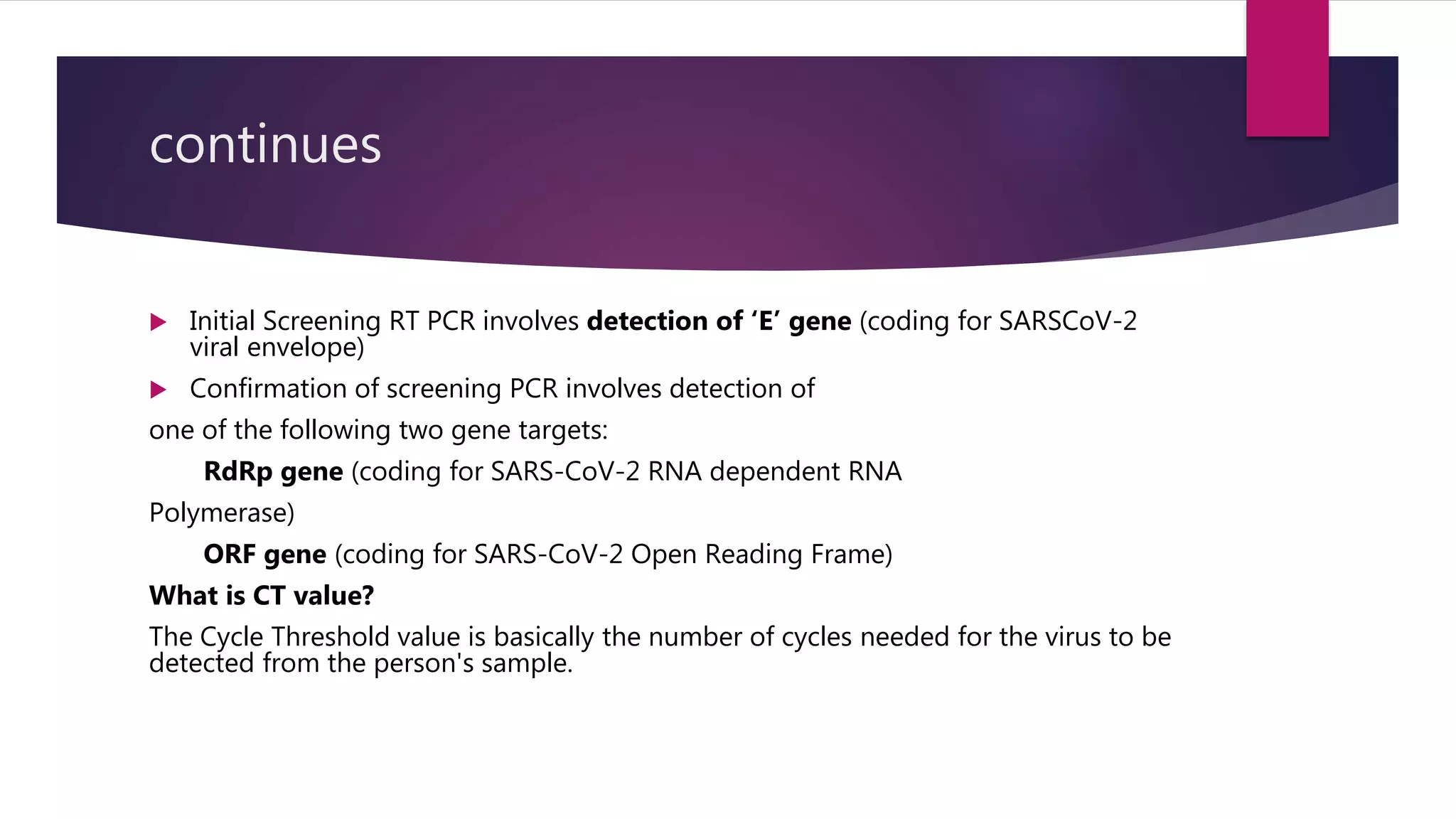This document provides information on laboratory testing for Covid-19 using RT-PCR. It describes how RT-PCR works to detect the presence of the SARS-CoV-2 virus by converting its RNA to DNA and amplifying any viral DNA present in samples through repeated cycles. Nasal and throat swabs are common sample types, and results are usually available within 4-8 hours. A lower Ct value indicates a higher viral load was present in the sample. Safety precautions like PPE and proper sample handling are important when conducting these tests.















